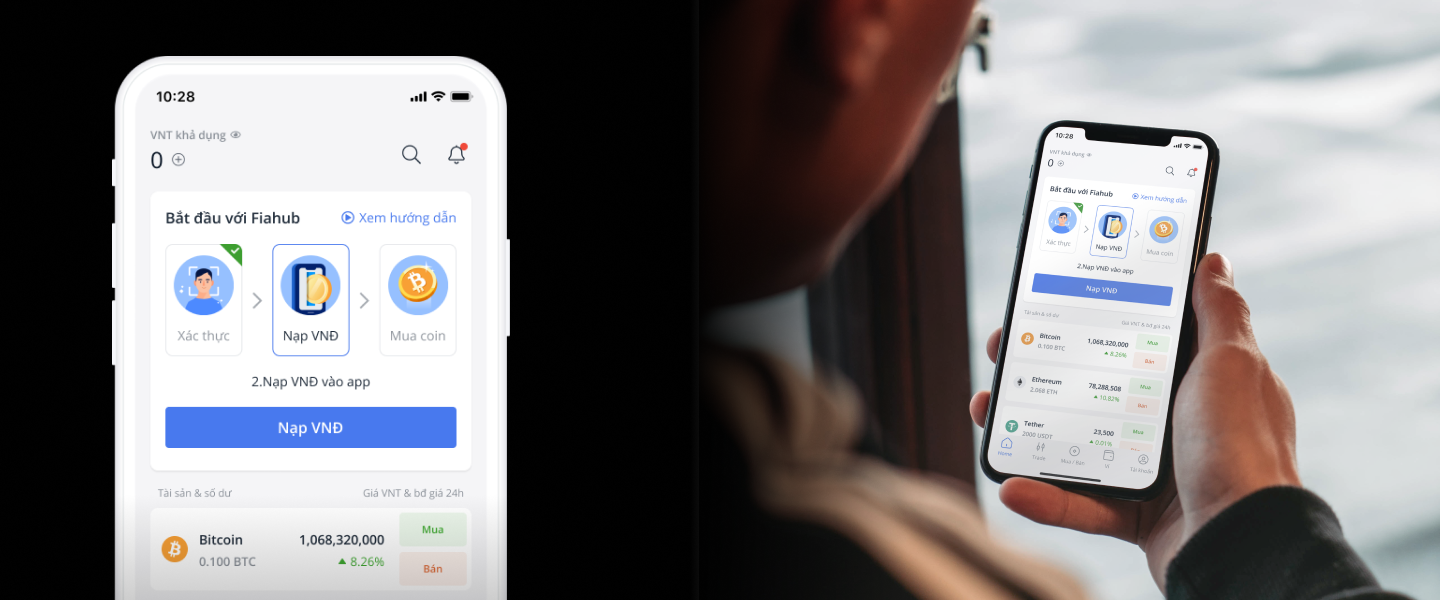Problem statement
In the years 2021-2022, many new investors (F0 investors) joined the investment market, especially in the hot cryptocurrency market. However, there were difficulties for users to make their first investments easily.
Objective
User's goal: to easily start investing in cryptocurrencies.
Business goal: to improve product adoption.
Old onboarding flow
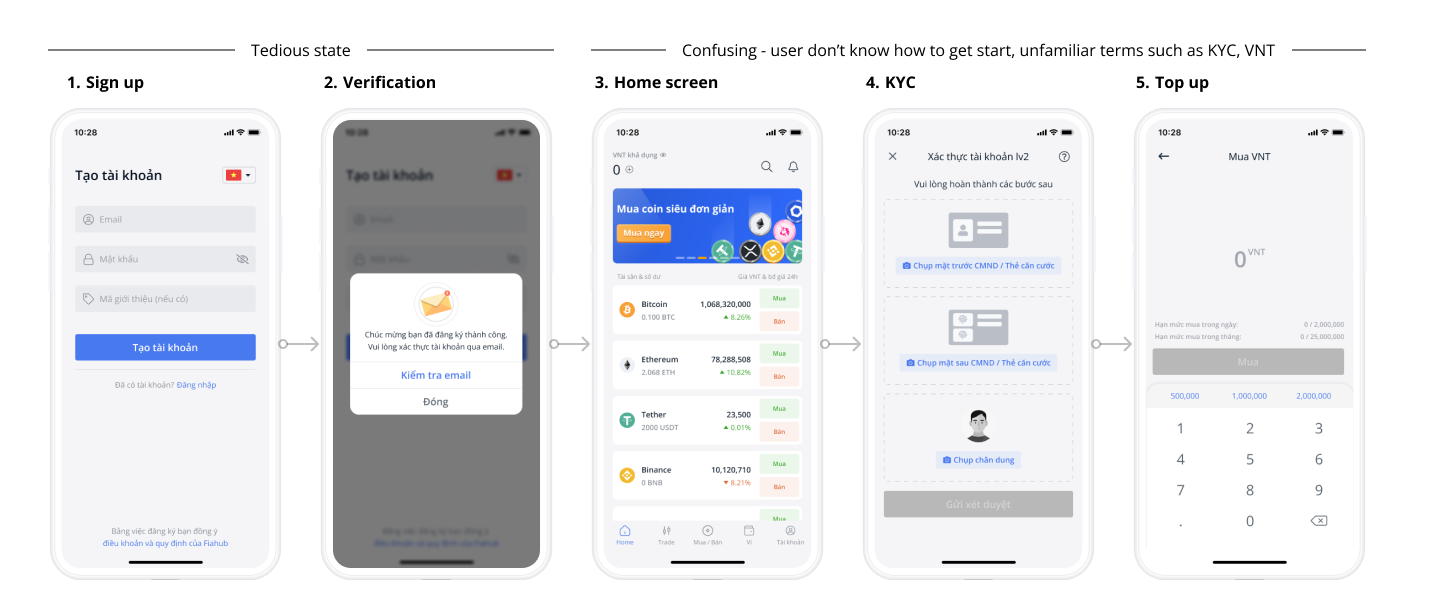
In the previous version, users were required to go through several steps before being able to invest a coin. These included signing up, performing KYC verification, depositing real money to purchase a stable coin, being aware of transaction limits, and exchanging the stable coin for other coins. This created a frustrating and tedious experience.
🫤 User's pain point: Users often find it frustrating to invest in a coin because of the many steps involved.
😢 Company’s pain point: Despite a lot of marketing efforts to attract customers to download the app, the conversion rate of registrations and first-time purchases remains low.
🪢 Constraints: KYC and transaction limits are essential measures to prevent fraud and risk. However, they can be frustrating for users, despite their importance for businesses.
In detail:
- Does this app require an account to access and explore its features? Yes, an account is required to log in and access the app's features
-> This can be an inconvenience for users as they must create an account before being able to explore and experience the app's interesting points. - When I come to the home screen, does it provide any starting point so that I can begin my first action?" There is no starting point provided on the home screen.
-> This can cause the user to expend more effort in learning the system and, worst of all, become stuck. - "Why do I need to provide a photo of my ID when I want to invest in cryptocurrency?"
-> This requirement may be confusing and could reduce credibility.
Solution exploration
There are numerous ideas for improving the onboarding experience. These can range from the very early stages, such as a banner or landing page, to the first screen when the user opens the app or logs in. Throughout each touchpoint, we can gradually support the user in understanding the product's benefits and how to get started.
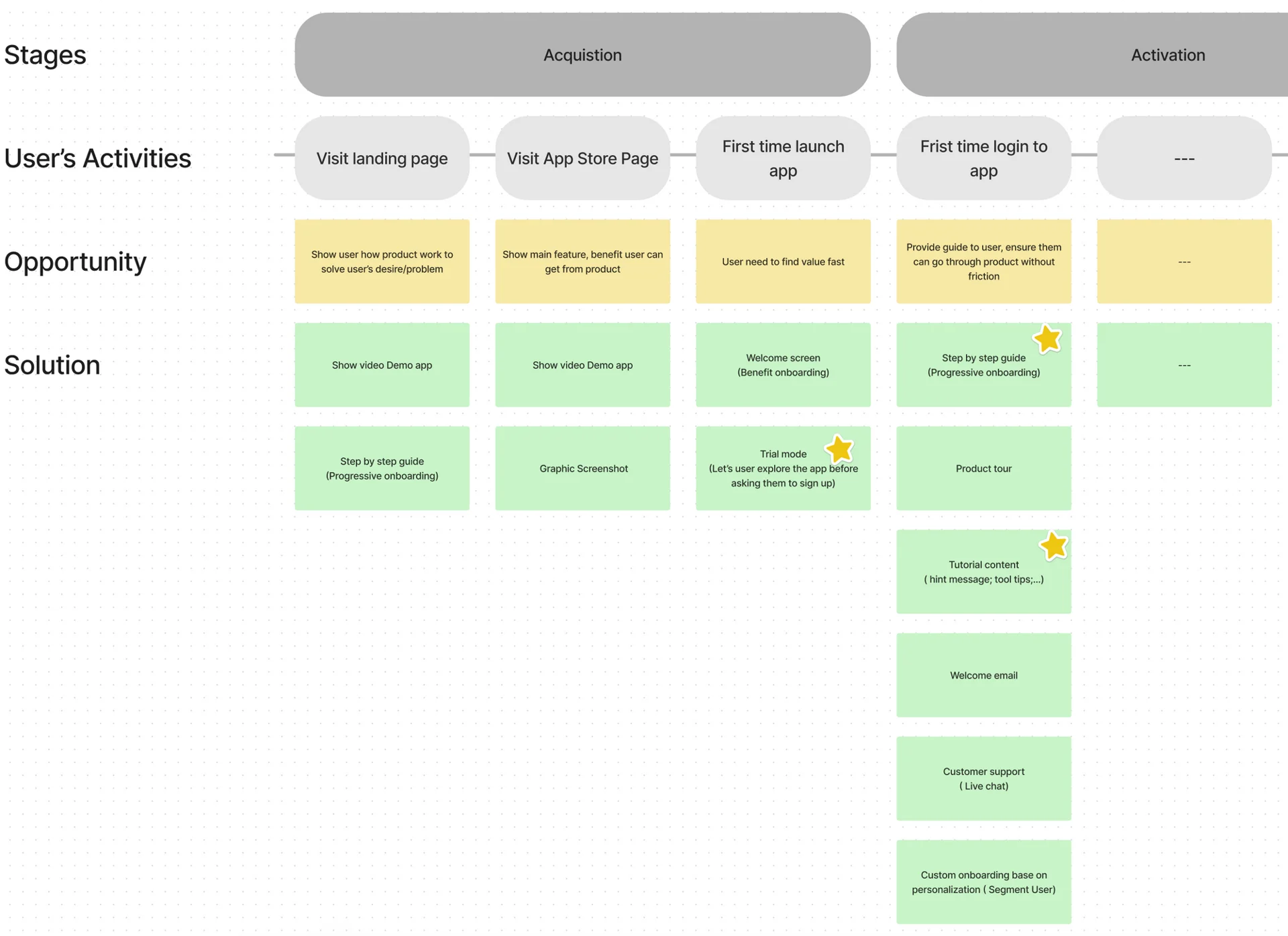
However, due to limited resources, we prioritize those that can encourage users to take quick action with fewer obstacles, and bring much value for business side. In the app scope, we will have these tasks to complete.
- Trial - To encourage user registration, provide a trial experience within the app that stimulates curiosity and interest.
- Progress dynamic - Once the user is registered, the app will provide information to encourage them to follow each step in order to promptly invest in their first coin.
- Contextual content - Throughout the process, it is important to provide users with relevant information to educate them about unfamiliar concepts in the market. For example, you may need to explain what stable coins are and how they work, as well as the importance of KYC (Know Your Customer) procedures and transaction limits. By doing so, you can help users make informed decisions and ensure a positive experience for everyone involved.
Design
Trial mode
Allow new users to quickly discover what makes the app interesting without requiring them to sign up or go through a walkthrough screen.
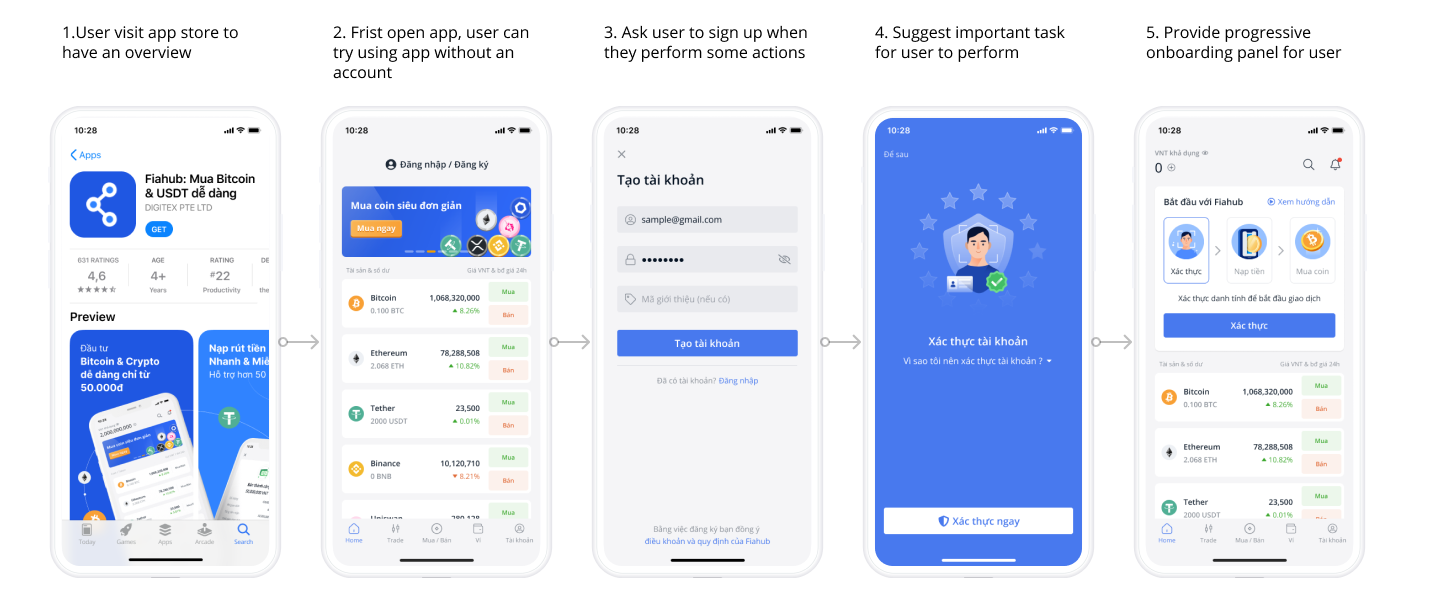
Progress dynamic
To reduce ambiguity, guide users on how to invest their first coin using the panel. The panel will help them take the next action.
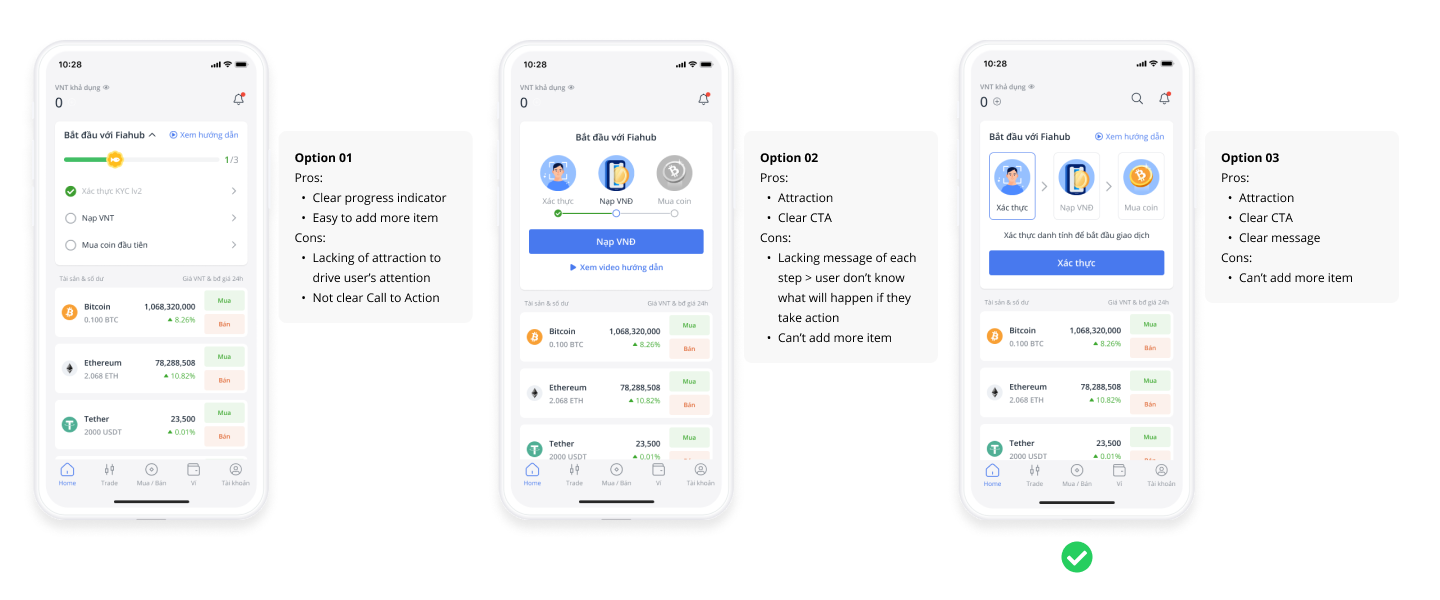
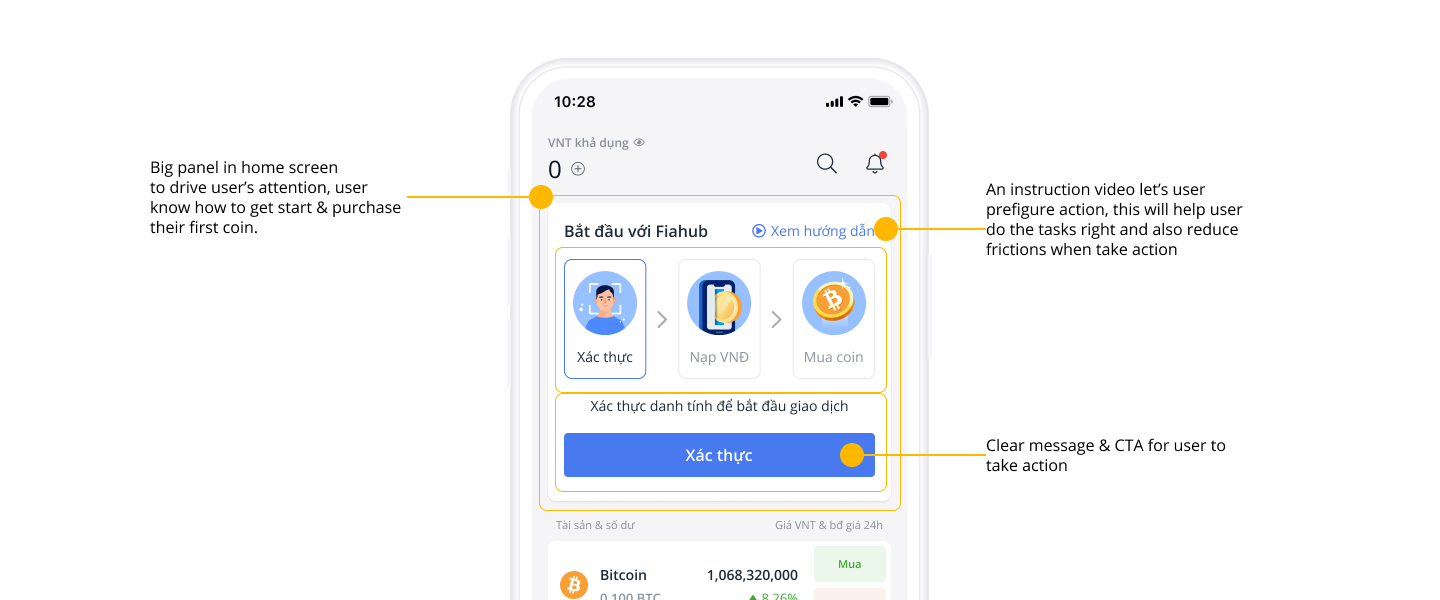
Contextual content
Help users become aware of guide information to ease their concerns within the appropriate context.
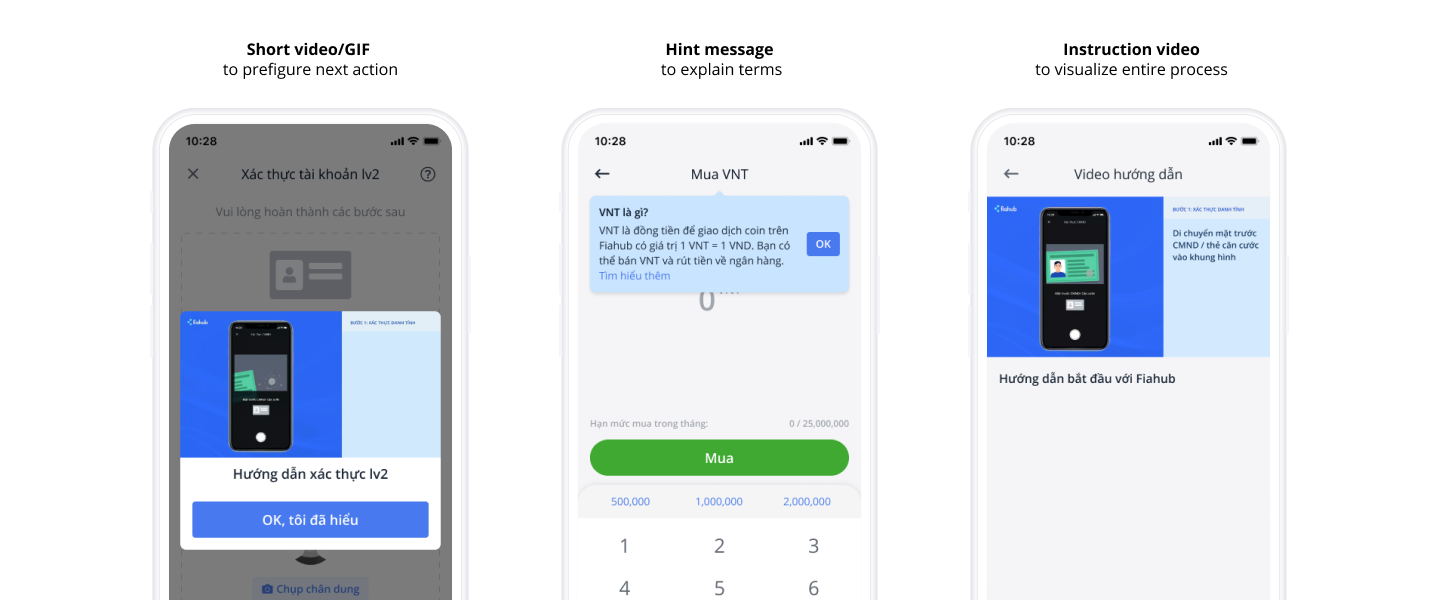
Results
60% increase
Finish KYC right after sign up
50% decrease
Time to first purchase
Key learning ☕
- Due to the limitations of the team, there is currently no specific department tracking metrics on user behavior, making it challenging to evaluate the effectiveness of the design and further improvements. However, I believe that through desk research and learning from best practices, we can still come up with a satisfactory solution for the product.
- The designs need to consider the company's terms and conditions, particularly in this product, such as mandatory rules like KYC and transaction limits. Designers should create low-fidelity sketches to demonstrate to stakeholders, facilitating early discussions and achieving consensus among them.
